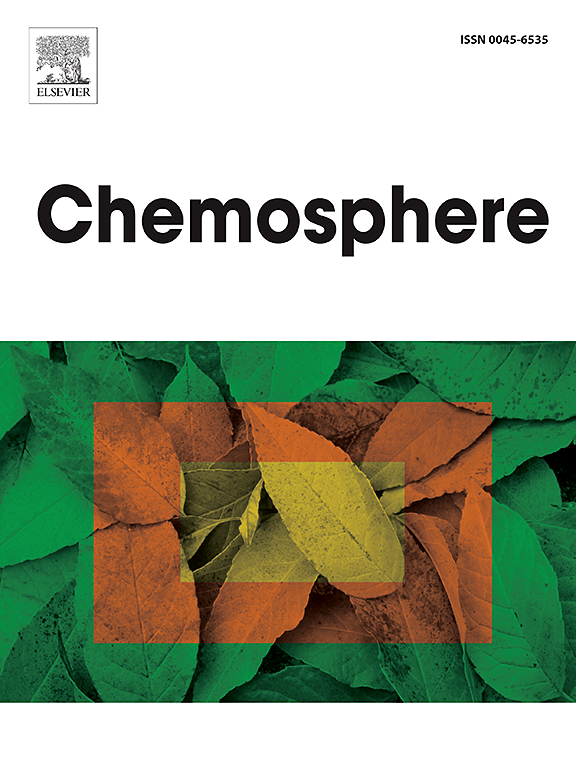Medicinal plant ashwagandha in hydroponics: Pioneering greywater remediation using response surface methodology along with plants’ physiological and phytochemical attributes for sustainable resource recovery
IF 8.1
2区 环境科学与生态学
Q1 ENVIRONMENTAL SCIENCES
引用次数: 0
Abstract
This study aimed to investigate greywater treatment through hydroponically growing ashwagandha, often referred to as "Indian Ginseng," which is rich in secondary metabolites and bioactive compounds that enhance its medicinal properties. The research examines the effect of input parameters, such as initial chemical oxygen demand (300–1500 mg/L), phosphate (0–120 mg/L), and nitrate (15–75 mg/L) and their optimization utilizing response surface methodology (RSM) with central composite design (CCD). The interactive effects are analysed with model fit through analysis of variance. The optimized parameters are investigated as 600 mg/L chemical oxygen demand (COD), 37 mg/L phosphate, and 35 mg/L nitrate, with maximum removal efficiencies of 97.74% COD, 93.62% total phosphorus, and 89.68% nitrate-nitrogen while preserving ashwagandha's medicinal qualities. The study assesses growth improvements through physiological traits, showing increase of 72.2% in wet biomass, 20% in plant height, 60% in leaf number, and total chlorophyll content of 45.45 μmol m−2. It also examines phytochemical characteristics, including fourier transform infrared spectroscopy analysis (-OH peaks within 3500-3000 cm−1) and total phenolic content of leaf and root extracts, measuring 7.14 mg gallic acid equivalents for leaves and 2.155 mg GAE for roots. Additionally, the extracts demonstrated radical scavenging activities of 73.26% for leaves and 83.74% for roots after treatment, highlighting ashwagandha's adaptability and resilience in greywater conditions. Lastly, scanning electron microscopy analysis to assess the impact of wastewater on the root structure. This research presents significant economic potential of the greywater treatment within 6 days by cultivating ashwagandha with the preservation of its medicinal properties.

水培药用植物ashwagandha:利用响应面法以及植物生理和植物化学属性进行可持续资源恢复的开创性灰水修复
这项研究旨在通过水培法种植印度人参来研究污水处理,印度人参通常被称为“印度人参”,它富含次级代谢物和生物活性化合物,可以增强其药用价值。本研究考察了初始化学需氧量(300-1500 mg/L)、磷酸盐(0-120 mg/L)和硝酸盐(15-75 mg/L)等输入参数的影响,并利用响应面法(RSM)和中心复合设计(CCD)对其进行了优化。通过方差分析,对交互效应进行模型拟合。以化学需氧量(COD) 600 mg/L、磷酸盐37 mg/L、硝酸盐35 mg/L为优化条件,COD去除率为97.74%、总磷去除率为93.62%、硝态氮去除率为89.68%,同时保持了药用价值。通过生理性状对植株生长的改善进行评价,湿生物量增加72.2%,株高增加20%,叶数增加60%,总叶绿素含量达到45.45 μmol m−2。它还检查了植物化学特征,包括傅里叶变换红外光谱分析(在3500-3000 cm−1范围内的-OH峰)和叶和根提取物的总酚含量,测量了叶片的7.14 mg没食子酸当量和根的2.155 mg GAE。此外,处理后的提取物对叶片的自由基清除活性为73.26%,对根的自由基清除活性为83.74%,表明了ashwagandha对灰水环境的适应性和恢复力。最后通过扫描电镜分析评价废水对根系结构的影响。本研究表明,在保留药用价值的情况下,通过培养印度人参,在6天内处理废水具有显著的经济潜力。
本文章由计算机程序翻译,如有差异,请以英文原文为准。
求助全文
约1分钟内获得全文
求助全文
来源期刊

Chemosphere
环境科学-环境科学
CiteScore
15.80
自引率
8.00%
发文量
4975
审稿时长
3.4 months
期刊介绍:
Chemosphere, being an international multidisciplinary journal, is dedicated to publishing original communications and review articles on chemicals in the environment. The scope covers a wide range of topics, including the identification, quantification, behavior, fate, toxicology, treatment, and remediation of chemicals in the bio-, hydro-, litho-, and atmosphere, ensuring the broad dissemination of research in this field.
 求助内容:
求助内容: 应助结果提醒方式:
应助结果提醒方式:


